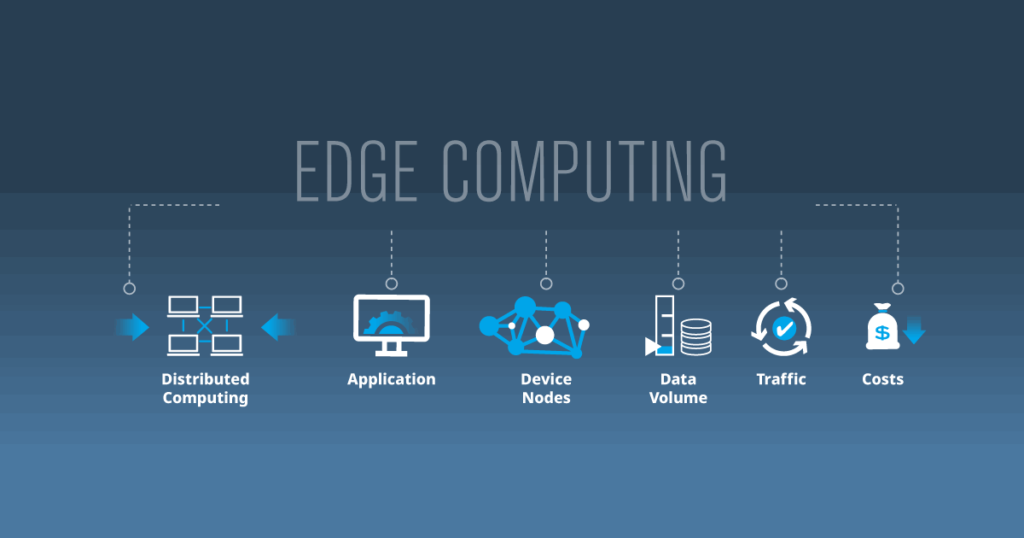“Edge Computing: Revolutionizing Data Processing at the Fringe of the Network”
Introduction:
In a world where data is generated at an unprecedented pace, the traditional model of centralized cloud computing faces challenges related to latency, bandwidth, and privacy. Enter edge computing, a revolutionary paradigm that takes data processing closer to the source. This article explores the concept of edge computing, its significance, real-world applications, and the transformative impact it is having on the way we interact with the digital world.
Understanding Edge Computing:

Edge computing is a distributed computing model that brings computational resources, data storage, and processing capabilities closer to the data source or “edge” of the network. Unlike conventional cloud computing, which centralizes data processing in remote data centers, edge computing leverages localized servers, devices, and data centers. This shift in approach has several key implications:
- Reduced Latency: By processing data closer to where it is generated, edge computing dramatically reduces the time it takes for data to travel back and forth to distant data centers. This is crucial for applications requiring real-time responsiveness, such as autonomous vehicles and industrial automation.
- Bandwidth Optimization: Edge computing minimizes the strain on network bandwidth by performing data processing and analysis locally, only transmitting relevant information to the cloud. This is especially advantageous in situations with limited network connectivity.
- Enhanced Privacy and Security: Sensitive data can be processed and stored locally, reducing the risk of data breaches during transit to centralized cloud servers. Edge devices can also enforce security protocols at the source.
- Scalability: Edge computing allows for flexible and scalable deployments, making it suitable for a wide range of applications, from smart cities to the Internet of Things (IoT).
Applications in the Real World:
Edge computing is driving innovation across various industries:
- Autonomous Vehicles: Self-driving cars rely on instant data processing at the edge to make split-second decisions and navigate safely.
- Smart Cities: Urban infrastructure, including traffic management, street lighting, and waste management, benefits from real-time data processing at the edge for improved efficiency and sustainability.
- Industrial IoT: Edge computing enhances industrial automation, predictive maintenance, and quality control by processing sensor data locally.
- Healthcare: Medical devices and wearable technology use edge computing for real-time health monitoring and timely intervention.
- Retail: Edge computing enables personalized shopping experiences, inventory management, and checkout optimization in retail environments.
- Telecommunications: Edge servers bring content closer to end-users, reducing latency for streaming, gaming, and content delivery.
The Future of Edge Computing:
The future of edge computing is promising, with several trends emerging:
- Fog Computing: Combining the principles of cloud and edge computing, fog computing extends cloud capabilities to the edge, creating a continuum of resources for data processing.
- AI at the Edge: Edge devices are becoming increasingly capable of running AI and machine learning algorithms, enabling advanced analytics and decision-making at the source.
- 5G Integration: The rollout of 5G networks will accelerate edge computing adoption, as high-speed, low-latency connectivity is ideal for edge applications.
- Hybrid Architectures: Many organizations are adopting hybrid cloud-edge architectures to balance the advantages of both centralized and localized computing.
Conclusion:
Edge computing represents a fundamental shift in how we process and analyze data in the digital age. By moving computation closer to the edge of the network, we unlock new possibilities for real-time applications, improve responsiveness, and enhance privacy and security. As edge computing continues to evolve and integrate with emerging technologies like 5G and AI, it is poised to reshape industries, drive innovation, and transform the way we interact with the digital world. The edge is no longer just the fringe; it’s becoming the beating heart of our data-driven future.